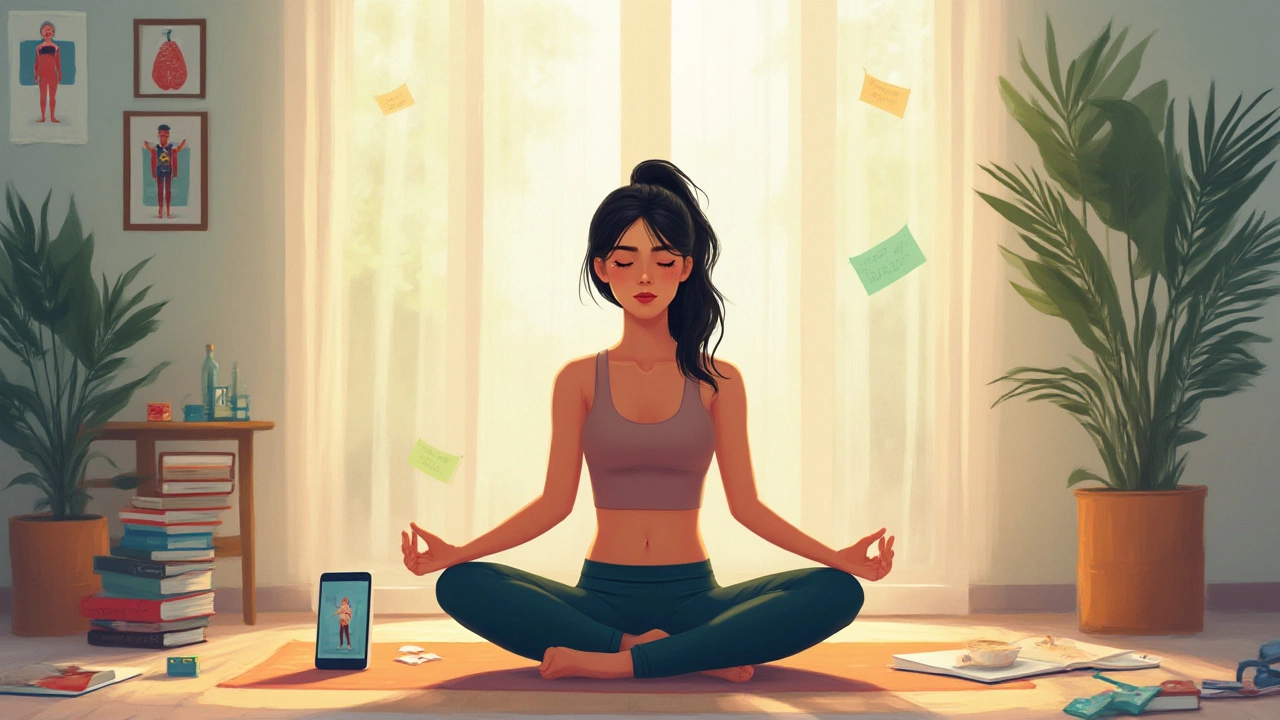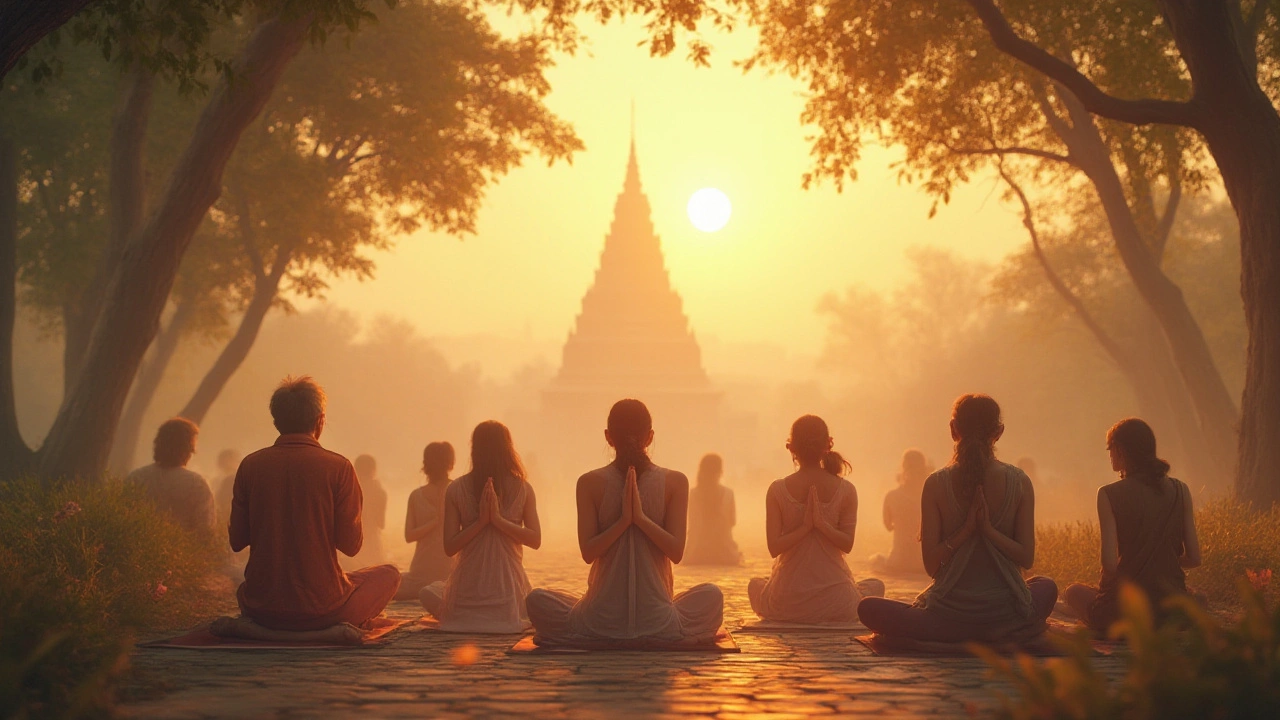So here’s something wild: around 300 million people worldwide practice yoga regularly, but just thinking about standing on a mat for the first time can make your heart race. If you’ve watched any of those Instagram yogis folding themselves like human pretzels, you’re not alone if you’ve thought, “Nope, not happening.” But how tough is yoga for absolute beginners? The truth isn’t as extreme—nor as simple—as it looks online. Still, plenty of folks roll out their mat once, struggle through a pose, and never come back. Where does the real challenge lie?
What Makes Yoga Feel So Intimidating to Beginners?
The first hurdle is the mind. Walk into any studio, and you might be the only one creaking in your joints while everyone else seems blissfully at ease balancing on one leg. But here’s what’s actually true: everyone starts at zero. The average beginner can’t touch their toes (less than 30% of adults can, in fact). Tight hamstrings, weak wrists, shaky balance—that’s most people’s starting point, not some rare exception. The images and videos you see online are the polished highlight reels, not reality.
It doesn’t help that yoga comes with its own lingo: Downward Dog, Chaturanga, Ujjayi breath. Beginners are often thrown into classes where instructions feel like secrets whispered by an ancient sect. It’s easy to feel lost or self-conscious. A lot of folks quit because they think they “aren’t flexible enough,” but research by the American Council on Exercise found flexibility improves in just six weeks of doing yoga twice a week. Not bad for the stiff joints crew.
Physical challenge is another story. Some poses will fire up muscles you forgot you had (hello, core and shoulders). But few people know that yoga is not just about flexibility—it builds real strength. A 2020 study published in Complementary Therapies in Medicine clocked a full Vinyasa class as burning between 180 and 460 calories per hour, rivaling brisk walks or slow cycling. You’re not just chilling on the mat; your body is working, especially in the first few weeks.
And then there’s the “comparison trap.” Ego sneaks in fast: you see someone do a handstand, and suddenly your wobbly Warrior II feels like defeat. That pressure to perform can drown out focus on your own progress. The biggest trick is to keep your eyes on your own mat (sometimes literally). Remember, the person executing that perfect crow pose has probably toppled over more times than you can count.
The Physical Reality: What Does Yoga Ask of Your Body?
Your first week of yoga won’t leave you floating home on a cloud, unless that cloud’s made of wobbly muscles and maybe a hint of embarrassment. But let’s get concrete. Yoga taps into almost every muscle group, often in ways normal daily movement skips. Ever held a plank? Yoga asks you to hold dozens of similar positions—sometimes for several breaths, sometimes longer. This static strength is called isometric exercise, and it spikes endurance faster than most realize.
Shoulders and wrists bear the brunt of weight in poses like Downward Facing Dog and Plank. If you spend most days typing, your wrists might protest at first. A study from the Journal of Bodywork and Movement Therapies found beginner yoga students most often report soreness in the wrists and lower back. A tip: make fists instead of flat palms if you need wrist relief, and always bend your knees slightly in Downward Dog. There’s no shame—form beats “looking perfect.”
It’s not all sweat and gritting teeth, though. Yoga is famously gentle on joints. People with knee issues rave about how it helps them build strength without impact, and even the gentlest classes can improve balance and proprioception (that’s your body’s way of knowing where it is in space). If you’ve ever tripped over your own foot, trust me, yoga helps.
The famous “flexibility test” gets debunked pretty quick. Less than 20% of new students can do a deep forward fold or sit comfortably cross-legged. Flexibility is a side effect, not a requirement. According to a 2023 survey by Yoga Alliance, more than 70% of beginners report measurable flexibility gains within three months. So if your tight hamstrings rebel when you reach for your toes, you’re right on track.
One surprising (and humbling) challenge? Breathing. Sure, you breathe every day, but controlled breath—called pranayama in yoga—feels strange. Your teacher cues you to inhale and exhale at odd moments, and deep belly breaths may leave you light-headed. This isn’t fluff; controlled breathing reduces stress and improves focus, both on and off the mat. A random fact: holding your breath during yoga can actually raise your blood pressure, so if you catch yourself doing it, just laugh and let it out.

Mental Barriers and Surprising Rewards in Your First Yoga Month
The hardest part for most beginners isn’t the stretching. It’s staying on the mat when progress feels slow and your mind won’t stop comparing. Yoga is as much mental as physical. The act of showing up—especially when you feel awkward—is real resilience training. It’s easy to think of yoga as “just stretching,” but about 40% of new students in 2024 said their biggest win was learning to turn off anxious thoughts. That’s not just feel-good talk: a study out of Harvard Medical School found yoga reduces stress hormones and increases GABA, a neurotransmitter linked to mood stability.
Still, the “monkey mind” is real. The moment you close your eyes in meditation or try to focus on your breath, thoughts rush in: dinner, work, what your neighbor thinks of your pose. Silence feels strange, even uncomfortable, especially for beginners. The trick? Treat each stray thought like a cloud drifting by. Notice it, don’t judge, move on. This mental training is something many yoga newbies never expected to gain.
One odd reward: sleep. Insomnia is rampant—up to 30% of adults struggle with sleep. An NIH study in 2022 found that adults who did yoga three times a week fell asleep 30% faster and spent more time in deep, restorative sleep. That’s more effective (for some) than melatonin. Savasana, also known as “corpse pose” at class-end, isn’t just for relaxation. It’s reboot time for your nervous system. If you feel silly lying still while everyone else is seemingly blissed out, hang in there. Your brain’s wiring starts to change; you’ll feel it after a few weeks.
The mental part gets another boost from community. Don’t underestimate the power of struggling in a room full of equally confused beginners. Studios love to create a “no judgement” culture for a reason: everyone has toppled over, everyone has felt left behind at some point. If you connect with even one person, odds are you’ll return. There’s science behind this—group exercise raises endorphins and makes habits stick, a fact proven by researchers at the University of Oxford who found team-based classes promote higher pain tolerance (and more laughs) than solo efforts.
Tried-and-Tested Tips: Making the Start of Yoga Way Easier
The secret to surviving—and enjoying—your first month? Smart hacks and realistic expectations. Here’s the playbook:
- Don’t splurge on gear. Wear whatever lets you move. Fancy mats matter less than you think. (But a grippy surface does stop faceplants.)
- Always let instructors know you’re a beginner. They’ll cue extra tips, help you modify, and maybe prevent your first on-mat tumble.
- Short, frequent sessions beat marathon classes. Even 15 minutes a few times a week delivers faster results and keeps soreness from derailing your week.
- Learn the “core four”: Downward Dog, Cat/Cow, Warrior II, and Child’s Pose. These show up everywhere, and mastering them builds confidence fast.
- Breathe deep, and work on exhaling slowly. When in doubt, let your breath guide your speed—it’s not a race.
- Skip the performance stress. Every yogi you admire has fallen over—and most still do, often. Progress is ugly, not linear.
- Track progress—not just what you can do, but how you feel after each session. Energy up? Sleep better? Stress lower? That’s your real progress bar.
- Rest is part of yoga. Never skip Savasana. It’s where the magic happens for your brain and body.
Reality check: you won’t master the splits in a month. But the numbers tell their own story, and they’re encouraging. Take a look below:
| Metric | Beginners (First Month) | Experienced (1+ Year) |
|---|---|---|
| Flexibility improvement | +15% (avg) | +5% annually |
| Balance test time | +20 seconds | +45 seconds |
| Reported stress | -22% | -35% |
| Sleep quality score | +18% | +28% |
Bottom line: The real challenge is sticking with it when you feel awkward, sore, or like the slowest learner in class. But once you stop comparing and learn at your own pace, yoga stops feeling like an impossible club and starts feeling, quietly, like home. Everyone started somewhere. If you can breathe, you can do yoga—everything else is just practice.
